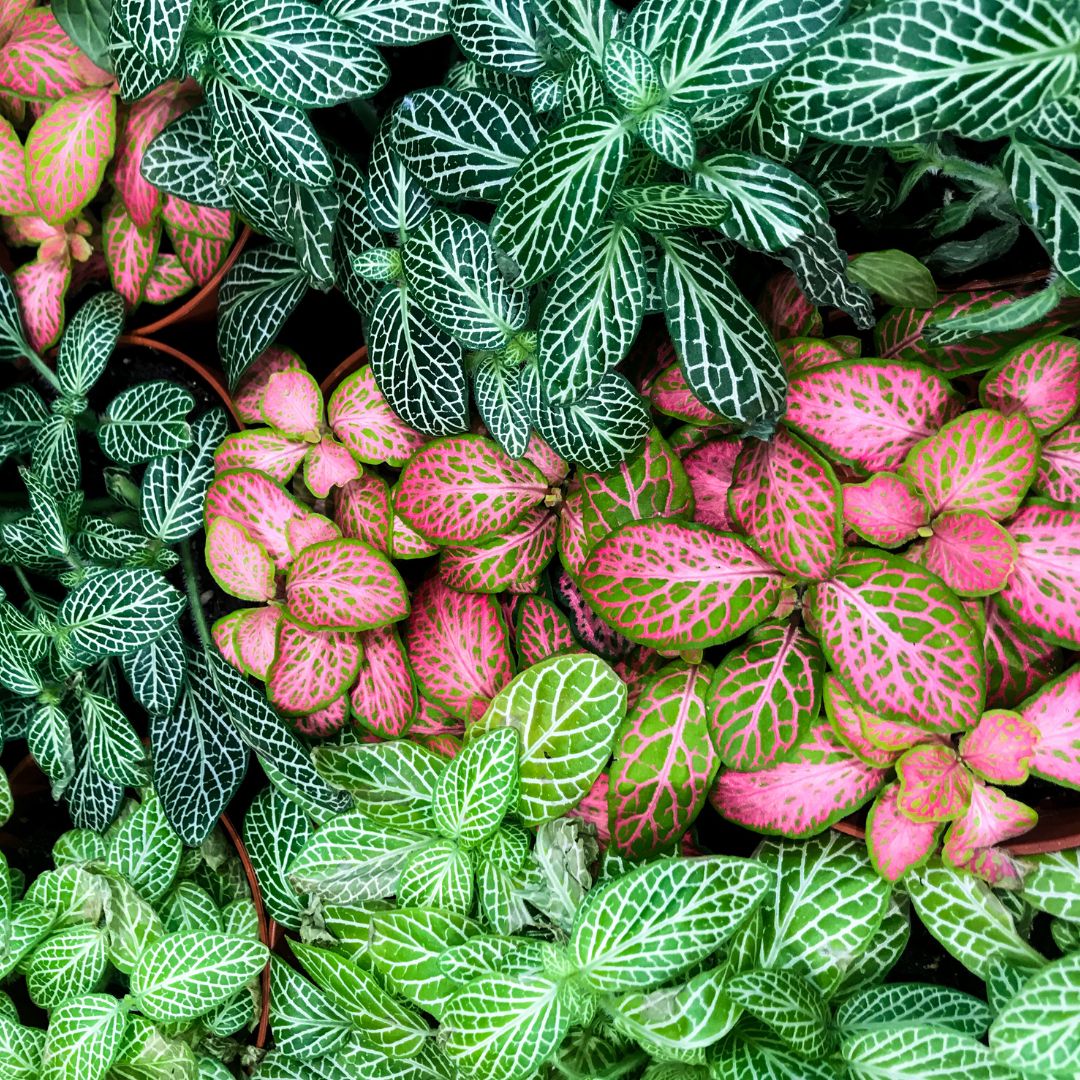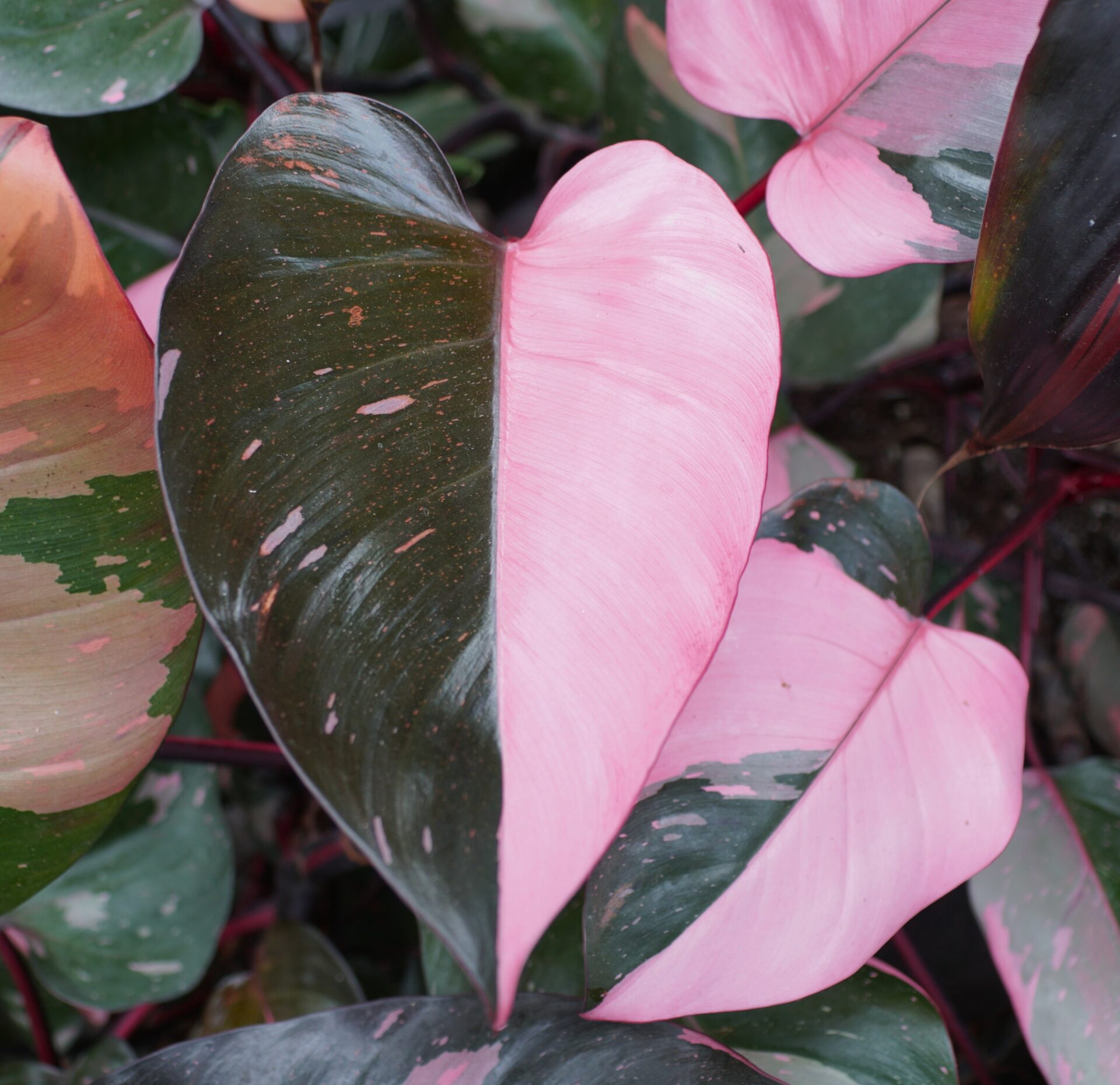When it comes to giving plants for Valentine’s Day, flowering plants are probably what immediately
spring to mind. Whether the romantic colors of roses, flamingo flowers and orchids or the perfumed
blooms of jasmine and gardenia, these types of plants are what are usually sought. However, those that
offer hints and splashes of pink and red in their foliage make an interesting gift, and such plants come in
a variety of sizes from petite to more substantial.
Polka dot plant (Hypoestes phyllostachya) is a familiar foliage plant, getting its common name from the
profusion of green spots and splashes that cover its white, pink or red leaves. Happy in medium light,
this small colorful gem is an easy plant for desks or other small spaces. While it does flower, these are
not as eye-catching and are best removed when they appear.
Nerve plant (Fittonia spp.) is another similar sized plant and is also an excellent candidate for terrariums.
It gets its common name from the colorful veining on its compact green leaves and like the polka dot
plant also comes in white, pink or red variations, as well as differing leave sizes. It too flowers, although
whether you leave them is a matter of taste and it appreciates medium light and consistent moisture,
hence its suitability for terrariums.

Calathea, such as the cultivar ‘Dottie’ with its deep purple leaves marked with deep pink lines is a striking
plant for medium light conditions. Another calathea with pink veining is C. ornata (known as Pinstripe Calathea). This grows taller than ‘Dottie’ but they both appreciate indirect light and consistent moisture. An interesting fact about this plant family and its relatives is that they display nyctinasty, which means they close, or at least raise their leaves at night. Prayer plants are the most well-known example of this.
Related to Calathea is Stromanthe, and the cultivar ‘Triostar’ (S. sanguinea) is a beautiful mix of cream,
green and rosy-red leaves which have red backs to them. This colorful red extends down the stems and
is particularly noticeable at night when the leaves point upwards, revealing their red undersides.

If you are looking for an easy-care houseplant that is not demanding where light or water are concerned,
look no further than Chinese evergreens (Aglaonema spp.) Whether it is the marbled green, yellow and
pink of Siam Aurora or the more vibrant red and pink hues of ‘Red Valentine’ and ‘Valentine Wishes’, there
are a wealth of red and pink toned Chinese evergreen that are tolerant of lower light conditions.
If a dramatic vining plant takes your fancy look no further than Philodendron ‘Pink Princess’. When first
introduced this plant took the houseplant industry by storm with its deep burgundy leaves splashed with
varying amounts of bright candy pink. While it has ceded its place as the most sought-after
philodendron to newer cultivars, it is still highly desirable but just more readily available!

If something unusual is what you are after, consider an earth star (Cryptanthus). These small terrestrial
bromeliads produce clusters of pink and red streaked pointed leaves that radiate outwards to form the
star shape of their name. Unlike most bromeliads, their flowers are not the most significant feature, but
once done they will produce pups which, if left will the parent plant will form a small colony. These too
are plants for indirect light.
And finally, if you are looking for a pink sun-lover, succulents such as Echeveria fit the bill. There are
many cultivars of these rosette shaped succulents in varying shades and amounts of pink or red, but one
of the best known is ‘Perle von Nurnberg’. There is also a wealth of similar succulent species that add a
rosy hue to sunny spots.
So, if you have a Valentine with a green thumb, consider giving these romantic-colored foliage plants as a more unusual and longer-lasting gift than cut flowers.







